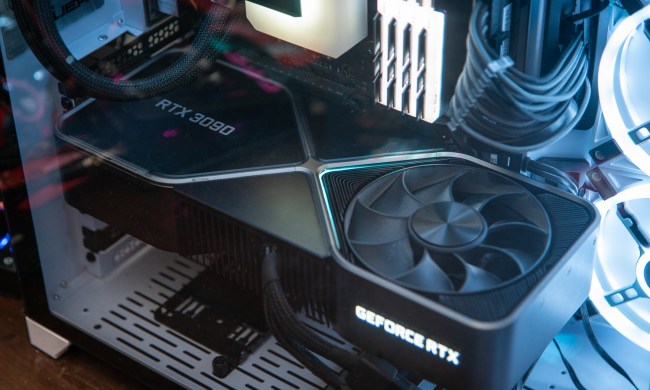
The Minecraft team at Microsoft has finally taken the wraps off a new mobile augmented reality game. It’s called Minecraft Earth, and it’s going to bring an augmented reality (or AR) Minecraft world to your Android or iOS smartphone later this year.
I was among the lucky few to try an early version of Minecraft Earth. Here’s what I learned.
Minecraft Earth requires augmented reality
Pokémon Go is often called an AR game, but its blend of the virtual and real is light and optional. Yes, you can see Pokémon appear in the world through your camera, yet you also have the option to turn that off entirely. Augmented reality is not a requirement.
Minecraft Earth is different. The game requires use of augmented reality because it always maps in-game elements to the real world. An overworld map based off Open Street Maps data exists, but when it comes time to see Minecraft come to life, you have no fallback option. You must use your camera, and you must hold your phone up to play.
The overworld will look familiar
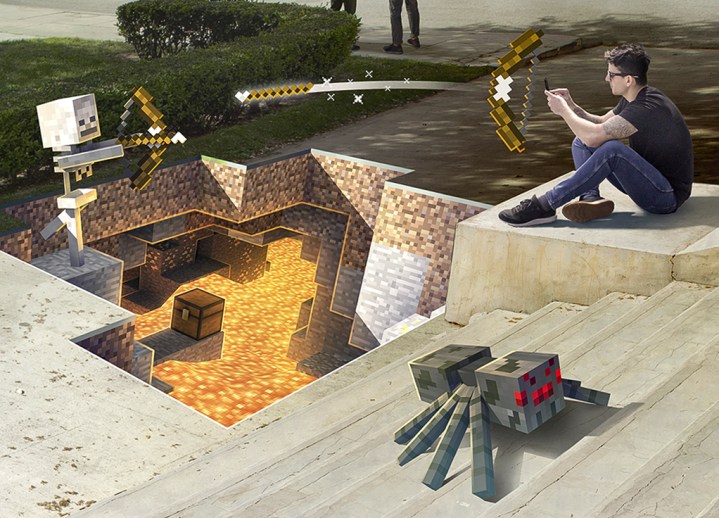
Minecraft Earth lets you explore a virtual world built on Open Street Maps data of our real world. The graphics are given a bit of blocky Minecraft paint, but the overall look and feel of the overworld map isn’t far off previous games in this genre. It’s full of things you can tap for rewards when GPS says you’re close enough (I was told the range will be about 70 meters). These are officially called “tapables.”
Like Pokémon Go and other competitors, Minecraft Earth will be making some judgement calls about where game objects should be located. They will appear only in “public” spaces, and will avoid private residence, businesses, or places that could be dangerous, like busy roads.
Tapables reward you with blocks, items, or animals. There’s a variety of rarities, from common cobblestone to very rare obsidian.
The augmented reality adventures are unique
Tapables are only one thing you’ll find on the map. You’ll also encounter Adventures, and that’s where Minecraft Earth starts to set itself apart.
Adventures are essentially mini-games that are linked to a specific real-world location. You might be walking through a park and see an Adventure appear. Walk up to it and you’ll see, through your phone, some Minecraft blocks on the ground. You can walk up to mine them, and when you do, you might uncover a cave with skeletons to kill or a puzzle to solve.
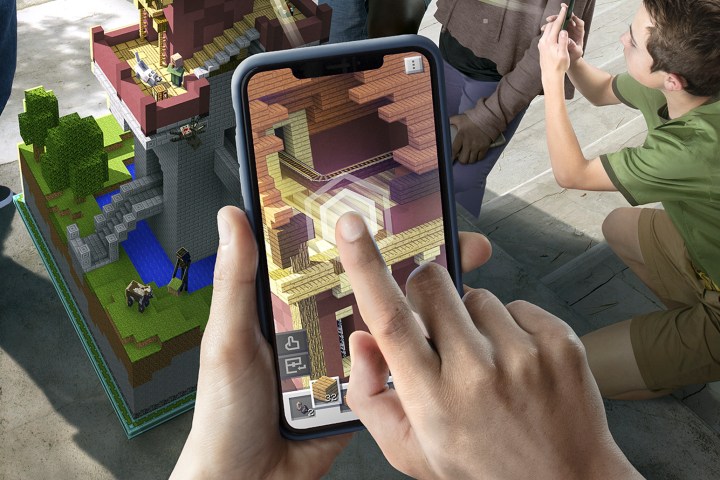
All this happens in AR through your phone, so what’s happening in the game mirrors reality. If you want to dodge an enemy’s arrow, you must move. If you want to pick up loot sitting twenty feet away, you must walk there. There’s no shortcuts or alternatives to playing in AR.
You can play at home, too
You find Tapables in the real world, and Adventures as well. Does that mean you have to stop playing when you get home?
Nope! Minecraft Earth lets you play in your living room by throwing down a Build Plate. That’s where the blocks you collected on your commute or a walk through the nearest park can be used to build a home, a castle, or a dungeon.
Build Plates map themselves to a flat surface in your play space (a table, in most cases) and give you a god’s eye view for easy editing. However, you can blow up the Build Plate to life-size scale to experience what your creation looks like from a first-person perspective.
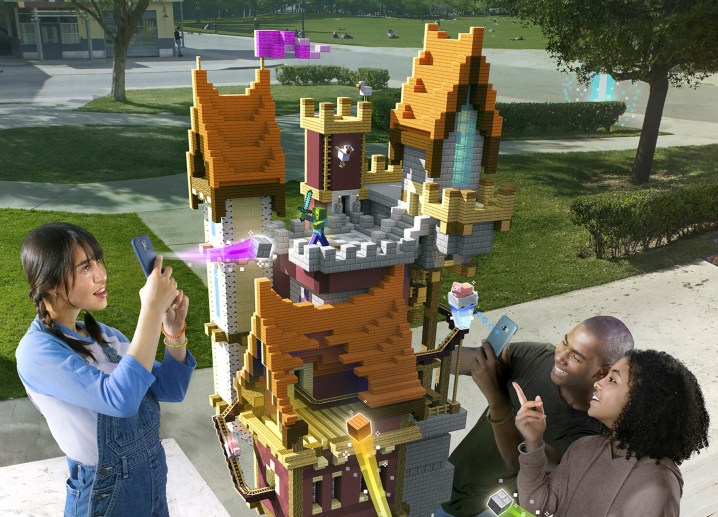
You can also invite friends to visit your Build Plate, though only so long as they’re in the same room as you. There’s no online multi-player in the traditional sense. And make sure your friends are trustworthy because, like with a normal Minecraft server, they change the build plate when they visit.
It’s free-to-play, and micro-transaction details are slim
Minecraft Earth will be a free-to-play game. Microtransactions will certainly be a part of the experience, but details about what will be sold and how much it will cost remain thin. The developers of course promise the game won’t be “pay to win.” However, since the game is almost entirely cooperative – there’s no PvP of any kind – it’s unclear what the lack of “pay to win” will mean in practice.
The developers say the game won’t have loot boxes.
It runs the Bedrock engine
Despite its differences, Minecraft Earth still runs the same Bedrock engine that’s used in Minecraft. It’s an important point, and one the developers took care to maintain. The vanilla game is now 10 years old and has a huge fan base that’s come to know and love certain in-game oddities, like the specific way water flows, or how redstone switches work.
All that knowledge you’ve retained from Minecraft continues to apply in the mobile game. Minecraft Earth does have a few unique blocks and mobs, but they’re variations instead of all-new mechanics. You might run across a “Muddy Pig” that loves mud like no pig you’ve seen before, but it otherwise looks and acts like any other Minecraft pig.
Can you craft?
Yes, you can. The game will drop the traditional three-by-three grid for simple recipes, but the recipes will be familiar to Minecraft players. With that said, exact details about what can and can’t be crafted, and the materials required, haven’t been made public yet.
Can you use mods?
No, you can’t. Mod support has not been ruled out in the future, but it’s not planned for launch and there’s no timeline for when it might be included.
Is cross-play supported?
No. Minecraft Earth may use the same Bedrock game engine as Minecraft, but it’s a very different game in most respects. You can’t play with people playing vanilla Minecraft and you can’t import or export creations from Minecraft Earth to Minecraft.
Can you play on HoloLens?
The Minecraft team previously announced a HoloLens version of the game. The experience working on that helped inform the team working on Minecraft Earth, but the two games are separate entities and there’s no plan to make Minecraft Earth available on Microsoft HoloLens or HoloLens 2.
You’ll need a beefy phone
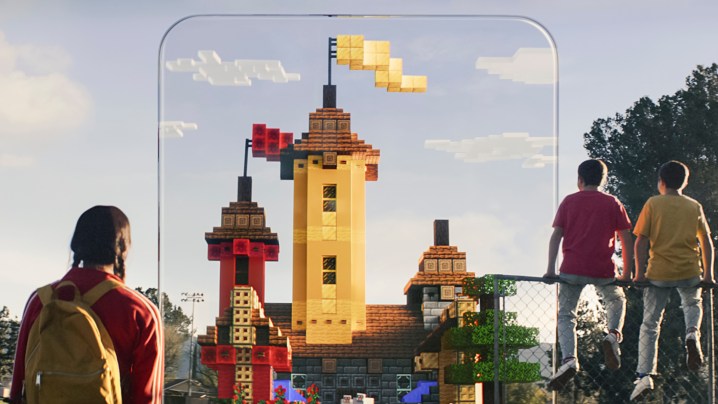
The game’s recommended technical specifications aren’t official, but I tried the game on a selection of Apple hardware that, to my eye, appeared to be the latest Apple iPhone XS. Playing the game caused the phone to become quite warm, a good indication that it was using all it had to render Minecraft Earth.
Augmented reality games tend to be demanding. They run best on relatively new hardware. They also drain battery life quickly. There’s no reason to think Minecraft Earth will be different. You’ll want a recently released phone for the best experience, and don’t forget to bring a portable battery.
When is the beta, and how do I join?
The closed beta will launch “this summer” on both iOS and Android. Entry will be limited, though the developers expect they’ll be able to invite “hundreds of thousands” of players over time, so your chances are good. You’ll also receive a free character skin if you sign up for the beta.
You can sign up on Minecraft Earth’s website. Note that players have to be 18 years or older.
And when’s the release date?
The final, full release date hasn’t been announced. Minecraft Earth is slated to come out later in 2019 and the team seems confident it will hit that window.
You can expect to hear more about the game at E3 2019.
